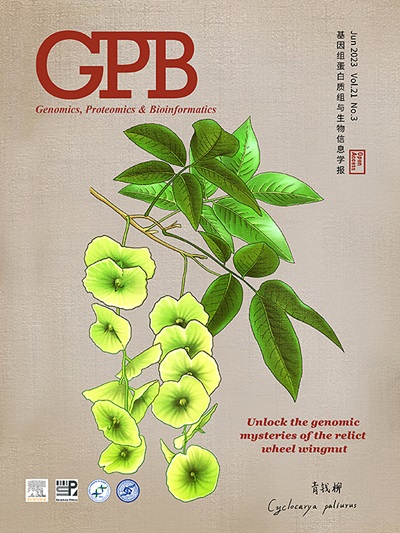全基因组测序揭示中华鲟自八倍体及其进化轨迹
IF 7.9
2区 生物学
Q1 GENETICS & HEREDITY
引用次数: 0
摘要
摘要 包括中华鲟和桨鱼在内的鲟形目是具有复杂基因组的 "活化石",是了解鱼类全基因组复制(WGD)和倍性进化的良好模型。在这里,我们对中华鲟(Acipenser sinensis)复杂的八倍体进行了测序,并组装了第一个高质量的染色体级基因组,中华鲟是一个极度濒危的物种,同时也代表了中华鲟形目中一个鲜为人知的倍数组。我们的研究结果表明,中华鲟是一个复杂的自八倍体物种,包含四种八价体(8n)、一种六价体(6n)、两种四价体(4n)和一种二价体(2n)。考虑到延迟再倍化的分析表明,中华鲟八倍体基因组的组成是两轮同源WGD的结果,并进一步揭示了其倍性进化的时间。该研究首次提供了中华鲟八倍体基因组资源,有助于了解多倍体鱼类的倍性组成和进化轨迹。本文章由计算机程序翻译,如有差异,请以英文原文为准。
Whole-genome Sequencing Reveals Autooctoploidy in Chinese Sturgeon and Its Evolutionary Trajectories
求助全文
通过发布文献求助,成功后即可免费获取论文全文。
去求助
来源期刊

Genomics, Proteomics & Bioinformatics
Biochemistry, Genetics and Molecular Biology-Biochemistry
CiteScore
14.30
自引率
4.20%
发文量
844
审稿时长
61 days
期刊介绍:
Genomics, Proteomics and Bioinformatics (GPB) is the official journal of the Beijing Institute of Genomics, Chinese Academy of Sciences / China National Center for Bioinformation and Genetics Society of China. It aims to disseminate new developments in the field of omics and bioinformatics, publish high-quality discoveries quickly, and promote open access and online publication. GPB welcomes submissions in all areas of life science, biology, and biomedicine, with a focus on large data acquisition, analysis, and curation. Manuscripts covering omics and related bioinformatics topics are particularly encouraged. GPB is indexed/abstracted by PubMed/MEDLINE, PubMed Central, Scopus, BIOSIS Previews, Chemical Abstracts, CSCD, among others.
 求助内容:
求助内容: 应助结果提醒方式:
应助结果提醒方式:


